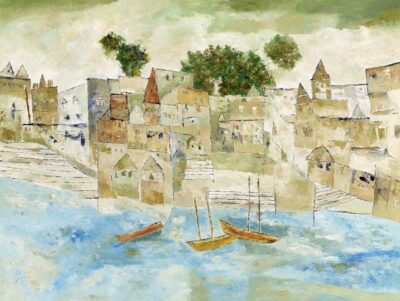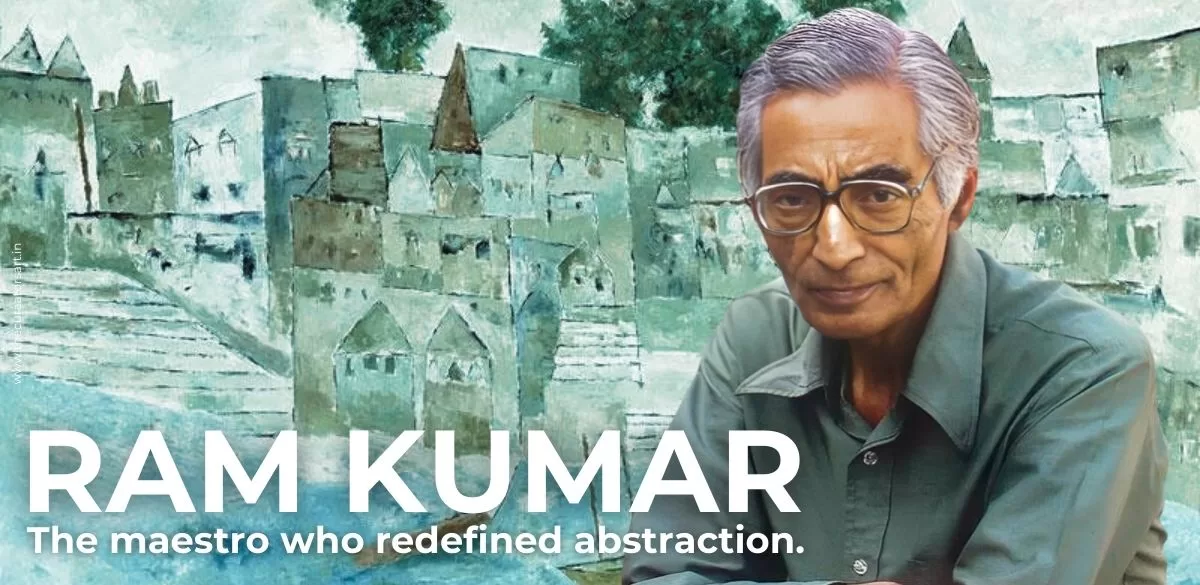From figurative to abstraction, Ram Kumar, a luminary in India’s creative cosmos, is a beacon of inspiration, revolutionising the canvas with his summary strokes. Born in 1924, Ram Kumar’s journey from the corridors of academia to the bustling avenue of Paris and at last to the serene landscapes of Varanasi captures a profound evolution in both of those his art type and thematic preoccupations.
Ram Kumar was drawn into the art planet due to a chance come upon with an exhibition at the Sarada Ukil College of Art while pursuing his Master’s in Economics at St Stephen’s College in 1945. He enrolled in evening lessons at the art faculty underneath the steerage of artist Sailoz Mookherjea. Kumar started out to hone his skills in nonetheless-lifetime portrait portray, step by step transitioning to capture the city decay and human situation of Delhi and Shimla by his paintings. During his formative many years, Kumar’s art reflected a lively electricity, frequently depicting scenes of day-to-day everyday living juxtaposed with further existential themes. His is effective, this kind of as “Why Can’t I Sleep” and “Oppression”, mirrored the underlying social and political currents shaping put up-independence India.
In 1948, Ram Kumar’s creative journey took a sizeable change when he joined a Hindi each day newspaper as a journalist trainee and crossed paths with artist J. Swaminathan. This encounter solidified his dedication to art, and began a lifelong friendship with fellow artists this kind of as S.H Raza, F.N. Souza and K.H.Ara. The year 1949 witnessed Ram Kumar’s 1st solo exhibition in Shimla, the place his paintings caught the eye of Dr Zakir Hussain, the then Vice-Chancellor of Jamia Millia Islamia University. Encouraged by the early success, Kumar embarked on a journey of creative enlightenment to Paris.
With its prosperous cultural tapestry, Paris was a crucible for Kumar’s artistic evolution. Underneath the tutelage of renowned artist Andre Lhote, Kumar delved into the do the job of strains, curves and colours, imbuing his will work with a newfound dynamism inspired by the works of radicals like Louis Aragon and Roger Garaudy, as well as encounters with luminaries like Pablo Neruda, Kumar’s art commenced to reflect a deeper engagement with human thoughts and societal realities. The decades invested in Paris ended up transformative for Kumar, artistically and ideologically. His encounters with the will work of Courbet, Rouault, Kathe Kollwits and Edward Hopper instilled in him a deep appreciation and sensitivity to the human expertise, which would manifest in his afterwards is effective.
When he returned to India, Kumar was drawn to the historical metropolis of Varanasi, in which he encountered a land brimming with religious fervour and existential angst. The stark contrast in between the city’s vivid rituals and its silent decaying structures turned a recurring motif in Kumar’s art.

The 1960s marked a watershed second in Kumar’s artistic occupation as he transitioned from figurative to abstract expressionism. His “Grey Period” adjusted from vivid colors to muted tones reflecting the unfortunate realities of human suffering and mortality. His cityscapes of Varanasi, rendered in Cubist aerial views, symbolised the existential angst that permeated his perform. Kumar’s later performs continued to investigate Varanasi’s non secular and existential dimensions, albeit with a newfound sense of transcendence. His “Benaras Series”, characterised by ethereal blues and a feeling of collective spirituality, captured the city’s timeless attract though evoking a deep sense of human emotion and longing.
In retrospect, Ram Kumar’s creative journey is a testament to the transformative electrical power of exploration and introspection. From his early realist functions depicting the bustling streets of Delhi to, his afterwards summary compositions influenced by the charisma of Varanasi, Kumar’s artwork transcends boundaries and speaks to the universal human experience.
In a earth marked by frequent adjust and upheaval, Ram Kumar’s timeless artworks provide as poignant reminders of the enduring electric power of art to mirror, provoke and encourage. As we navigate the complexities of modern existence, could we find solace and enlightenment in the enduring legacy of artists like Ram Kumar, whose summary brushstrokes keep on to resonate throughout time and room.
